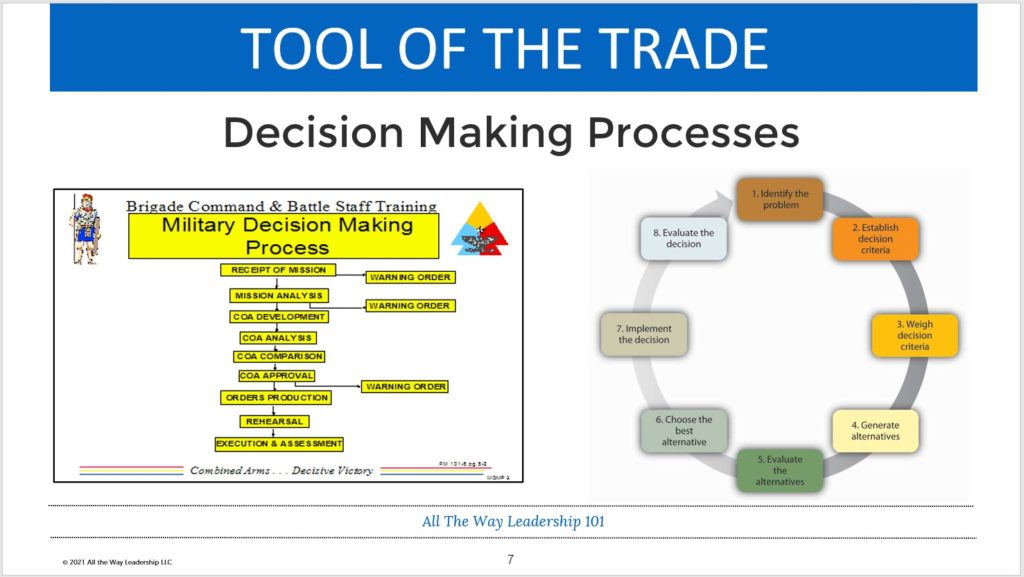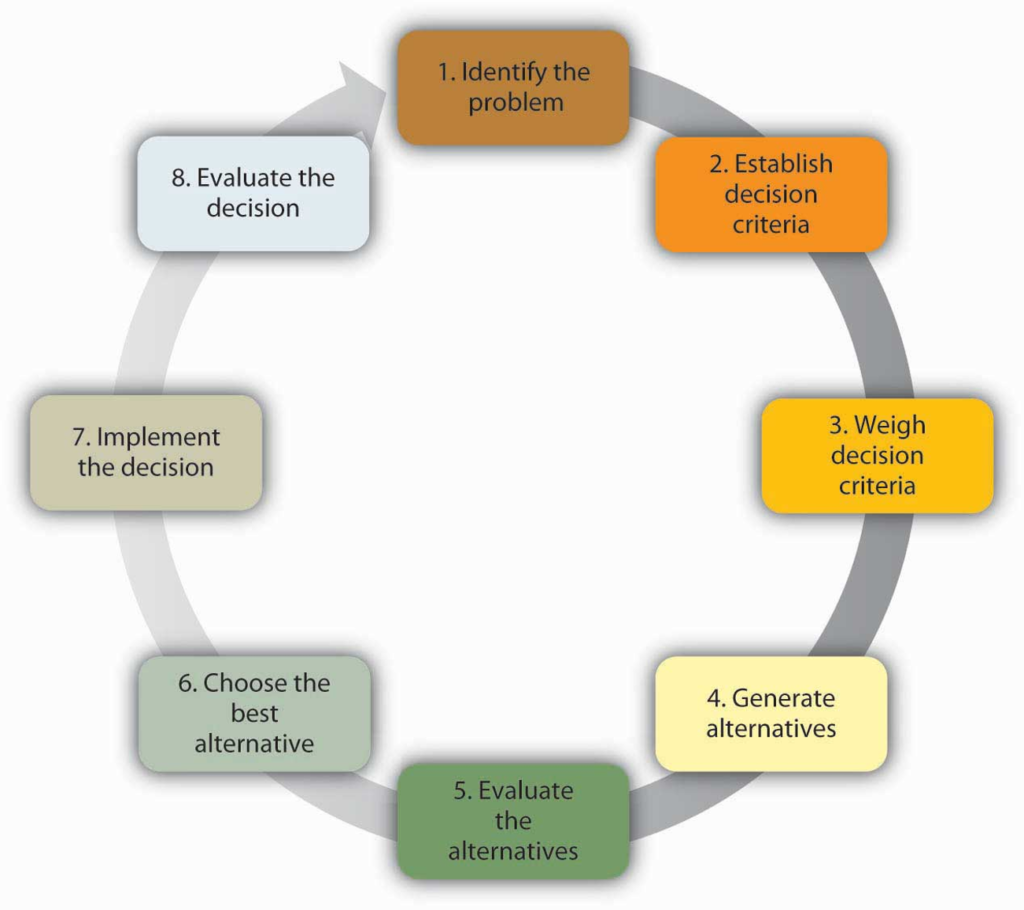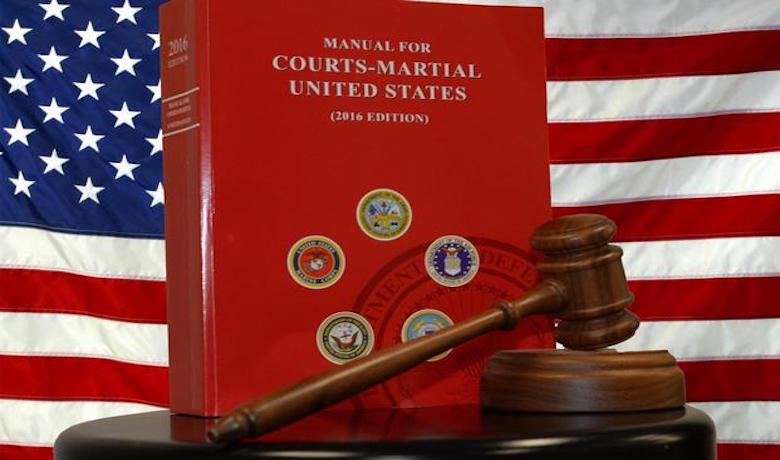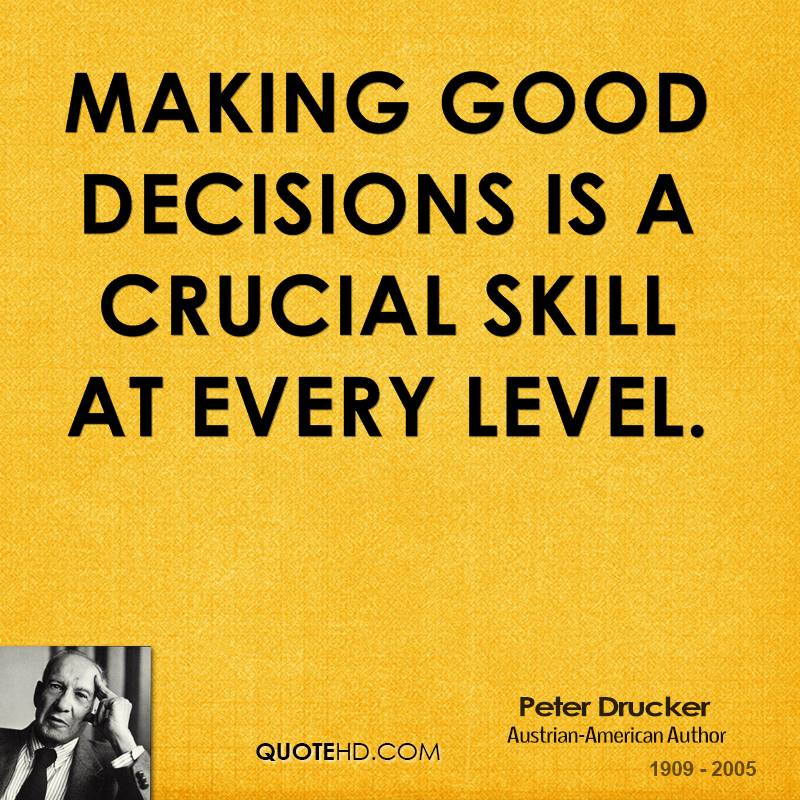In any moment of decision, the best thing you can do is the right thing, the next best thing is the wrong thing, and the worst thing you can do is nothing.
President Theodore Roosevelt
Some leaders are not good when it comes to making decisions

The leader who replaced him knew how to make good decisions
A new leader was put in charge. This leader knew how to make decisions. She gathered the team to decide on the overall approach so that we could get moving. She followed a standard process for making decisions. Even though all team members did not agree with every decision we were able to get to the finish line. A final product was delivered that was well-received. I watched in wonder as she turned around a bad situation in a month. It was a pleasure working for a leader who knew how to make good decisions.

A tool to help you make a decision
As a leader, it is important that you know how to make a decision. When I was in the military we were trained in military decision-making to be better leaders. In the civilian world, I recommend you follow a similar process. The diagram found below shows a standard decision-making process. On the left is the military model. The right is a civilian translation of the process. It is simple to understand.

Use this 8-step process for making decisions
- Identify the problem – what are you trying to solve?
- Establish decision criteria – what factors will you use to make the decision?
- Weight decision criteria – what is most important when making the decision?
- Generate alternatives – what are the different ways you can solve the problem?
- Evaluate the alternative – what are the plusses and minuses of the different options?
- Choose the best alternative – make the decision based on your analysis.
- Implement the decision – move forward with the decision and make it happen.
- Evaluate the decision – was it a good decision or not, in retrospect?

An example of bad decision making
Decades ago I worked for a commander who was not afraid to make decisions. But, he consistently made bad ones, especially when it came to discipline. He graduated from a small military college, not West Point nor the Citadel. There he learned the questionable principle that you punish everyone when anyone makes a mistake. That approach may work in the make-believe world he experienced during his college days, but it certainly does not work well in the real US Army. This fact did not bother him. Instead, he kept punishing the whole unit for the infractions of a few. In general, I found his discipline decisions annoying but was not overly concerned.

He continued making bad decisions
One day our unit experienced a serious incident. Special equipment was missing. We went into lockdown to find the item. After many intense hours of searching it was finally located. One soldier was mad at our commander regarding all the discipline and decided to fight back by trying to steal something. Our Commander went ballistic. My fellow leaders and I recommended he punish the person responsible severely, but not involve anyone else. He ignored our counsel and punished every single soldier in our unit. I received an official letter of reprimand along with all my peers. As you might imagine the commander’s decision was not well received by any of us.
A person who has been punished is not less inclined to behave in a given way; at best, he learns how to avoid punishment.
B.F. Skinner
No one supported this leader when he needed them the most
After that horrible decision, the commander paid the price. He lost everyone’s trust. In the not-too-distant future, something happened that called into question our commander’s conduct. A serious allegation was made against him – lying to receive a personal award. His boss launched an investigation that included interviews with all his subordinates. No one supported him, nor spoke a positive word on his behalf. They threw the book at him. The commander was fired in shame and sent away. His boss was wise enough to know that you only punish those responsible, not everyone.

What about you?
Do you know how to make good decisions? Do you follow a clearly defined process when making decisions? If not, it is time to learn how. If so, you will enjoy the next few blogs. We are going to explore this topic in detail to include points to ponder, practical tactical tips, and lessons learned based on decades of experience.

ATW! is designed to make you a better leader
I hope you join me on this journey to raise up the next generation of leaders. The world is in desperate need of more great leaders. Women and men who lead with confidence, clarity, and creativity. It’s time to become the leader that your world needs. Let’s go All The Way!
